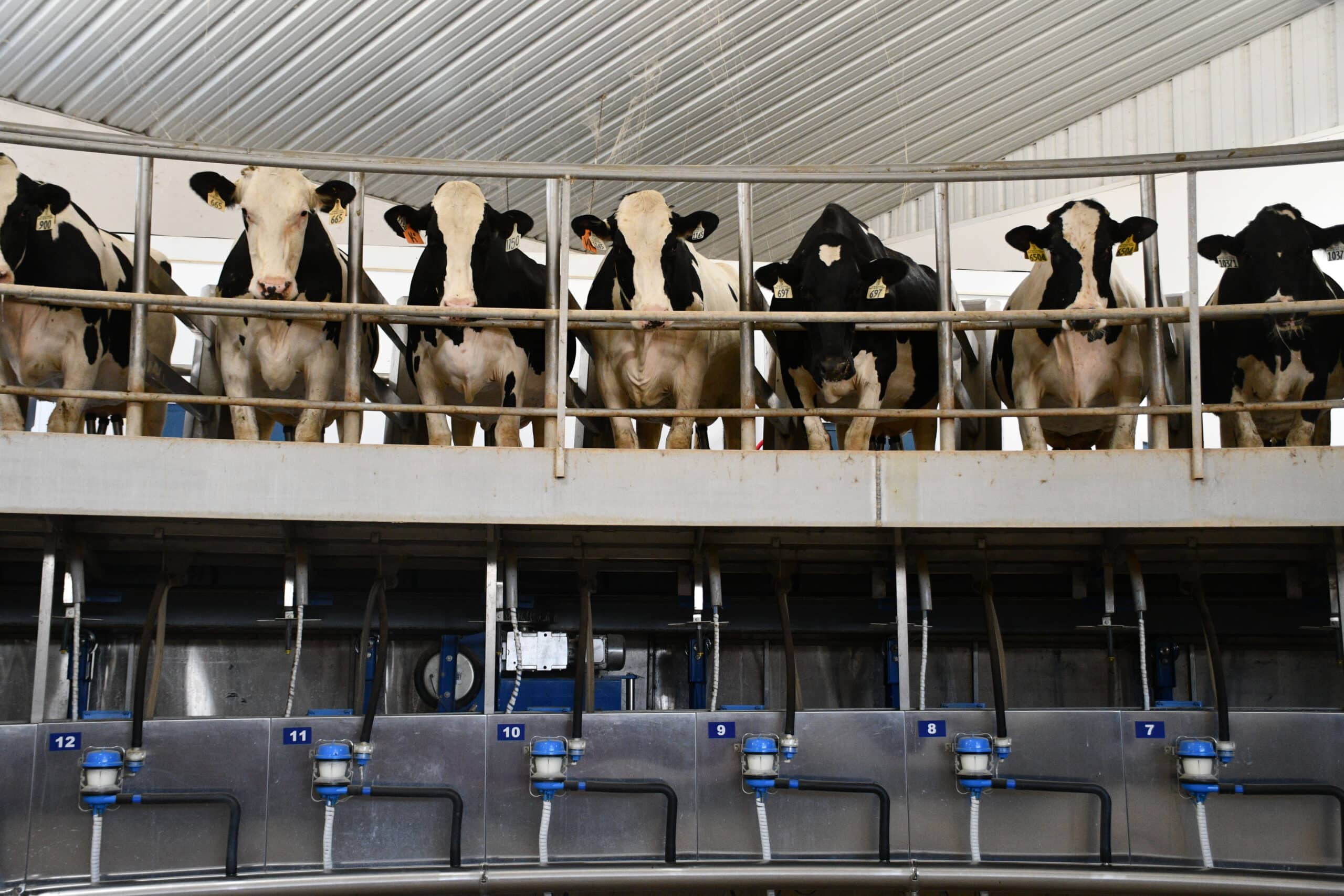What else can we do with a milk sample?
Written by Katelyn Allen
May 05, 2025

When a cowside milk sample arrives at one of the 31 Dairy Herd Information (DHI) labs across the country, it is analyzed for metrics including butterfat, protein, somatic cell count, and more. The owners and herdspeople of the 5 million cows on DHI test use that information to make mating, culling, and cow care decisions every day.
Milk samples already provide incredible insight — but it’s possible they could do even more.
CDCB, along with partners at USDA’s Animal Genomics and Improvement Laboratory (AGIL), National DHIA, and academic institutions around the U.S., regularly conducts research to find new ways to improve dairy cattle and support dairy farmers. One ongoing project involves determining what other information could be gleaned from DHI milk samples and how that could help manage cows more precisely.
CDCB Associate Research Scientist Malia Caputo, Ph.D., leads the project and discussed the value of milk sample data during the CDCB Producer Exchange in Reno, Nev. What makes this research possible, she explained, is how milk samples are analyzed: a process called infrared spectrometry.
Put simply, infrared spectrometry measures matter based on light absorption. DHI labs use infrared spectrometry to determine a milk sample’s fat, protein, lactose, and milk urea nitrogen (MUN) levels by identifying how much light is absorbed by (versus passing through) a sample.
Caputo explained that spectra data has also been shown to indicate health, fatty acid composition, and even fertility. So, if the information is already being collected, can we apply it in these other ways? She believes the answer is yes.
“Milk samples have tremendous potential to put more tools in your toolbelt,” Caputo said.
Let’s break down some of the possibilities:
Health: Spectra information could be used to identify biomarkers of cow health, she explained. This includes beta-hydroxybutyrate (BHB) used for ketosis detection, acetone, lactoferrin, and citrate. These metabolites would be most useful to identify at the first test day after calving as they are good indicators of early lactation health disorders. They are valuable on their own as well as in conjunction with other metrics like parity to find cows that need attention or to benchmark herd trends over time.
Milk fatty acids: Milk contains both de novo fatty acids, which are made in the udder, and preformed fatty acids, which come from the cow’s diet or her body tissue. Monitoring the levels of these two distinct types of fatty acids could provide insight into necessary ration, management, or transition care tweaks, Caputo said. For example, a lower de novo fatty acid level is a sign that the rumen is not functioning as well as it could be.
Fertility: Caputo referenced research done in Australia that showed spectra data from milk samples collected around 50 days prior to breeding could be used to predict an animal’s likelihood to conceive.
Research continues on how the milk spectra data already collected by DHI labs can be put to more uses to improve dairy cattle. An early need has been to develop a database of spectra information. “Up to this point, there really hasn’t been a reason to record milk spectra data,” Caputo acknowledged. Much of the information would be discarded. But with a greater understanding of what doors that data could unlock, the dairy community can make more efforts to capture these valuable keys.
This research is funded by CDCB and National DHI and supported by AGIL. Visit https://uscdcb.com/research for additional information about the Lactation Factors project.
